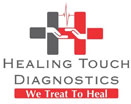WHAT IS ASD?
An ASD closure device (atrial septal defect) is an opening in the membrane between two chambers of the heart. Right Atrium consists of Deoxygenated blood and through that, it is sent to the lungs for purification after passing through the Right Ventricle. In Atrial Septal Disorder, there is exists a small hole in the wall separating the atria, called the atrial septum. Due to this, Oxygen-rich blood leaks from the left atrium to the right side resulting in the reverse flow of blood. As a result of this, right atria gets loaded with extra work as the oxygenated and deoxygenated blood gets mixed up, resulting in more pressure on the right atrium to send more blood to the lungs.
The typical symptoms include Heart murmurs as there is more blood flowing through the pulmonary vein shortness of breath, easy fatigue after exercise, heart palpitations, etc. These symptoms can arise early in childhood & they may also reflect in adulthood.
Patients with ASD are always suggested for a device closure surgery before symptoms get worsened & irreversible changes happen in the heart.
Right Atrium consists of Deoxygenated blood and through that, it is sent to the lungs for purification after passing through the Right Ventricle. In Atrial Septal Disorder, there is exists a small hole in the wall separating the atria, called as the atrial septum. Due to this, Oxygen rich blood leaks from the left atrium to the right side resulting in reverse flow of blood. As a result of this, right atria gets loaded with extra work as oxygenated and deoxygenated blood gets mixed up, resulting in more pressure on the right atrium to send more blood to the lungs.
There are four types of ASD which are as follows:
- Secundum ASD: It’s a condition where a hole occurs in the middle part of the wall between the atria (atrial septum). This is the most common type of ASD.
- Primum ASD: This defect arises in the lower part of the atrial septum and might be coupled with other congenital heart issues.
- Sinus venosus ASD: This is a rare defect. It usually occurs in the upper part of the atrial septum and this also is often coupled with other congenital heart issues.
- Coronary sinus ASD: In this rare defect, part of the wall between the coronary sinus — which is part of the vein system of the heart — and the left atrium is absent.
The typical symptoms include, Heart murmurs as there is more blood flowing through the pulmonary vein; shortness of breath, easy fatigue after exercise, heart palpitations, etc. These symptoms can arise early in childhood & they may also reflect in adulthood.
Small defects may never cause a serious issue, although larger defects may create some complications such as Right side heart failure, an increase in the risk of a stroke, shortened life span, pulmonary hypertension, Eisenmenger Syndrome etc.
Patients with ASD are always suggested for a device closure surgery, before symptoms get worsened & irreversible changes happen in the heart.


